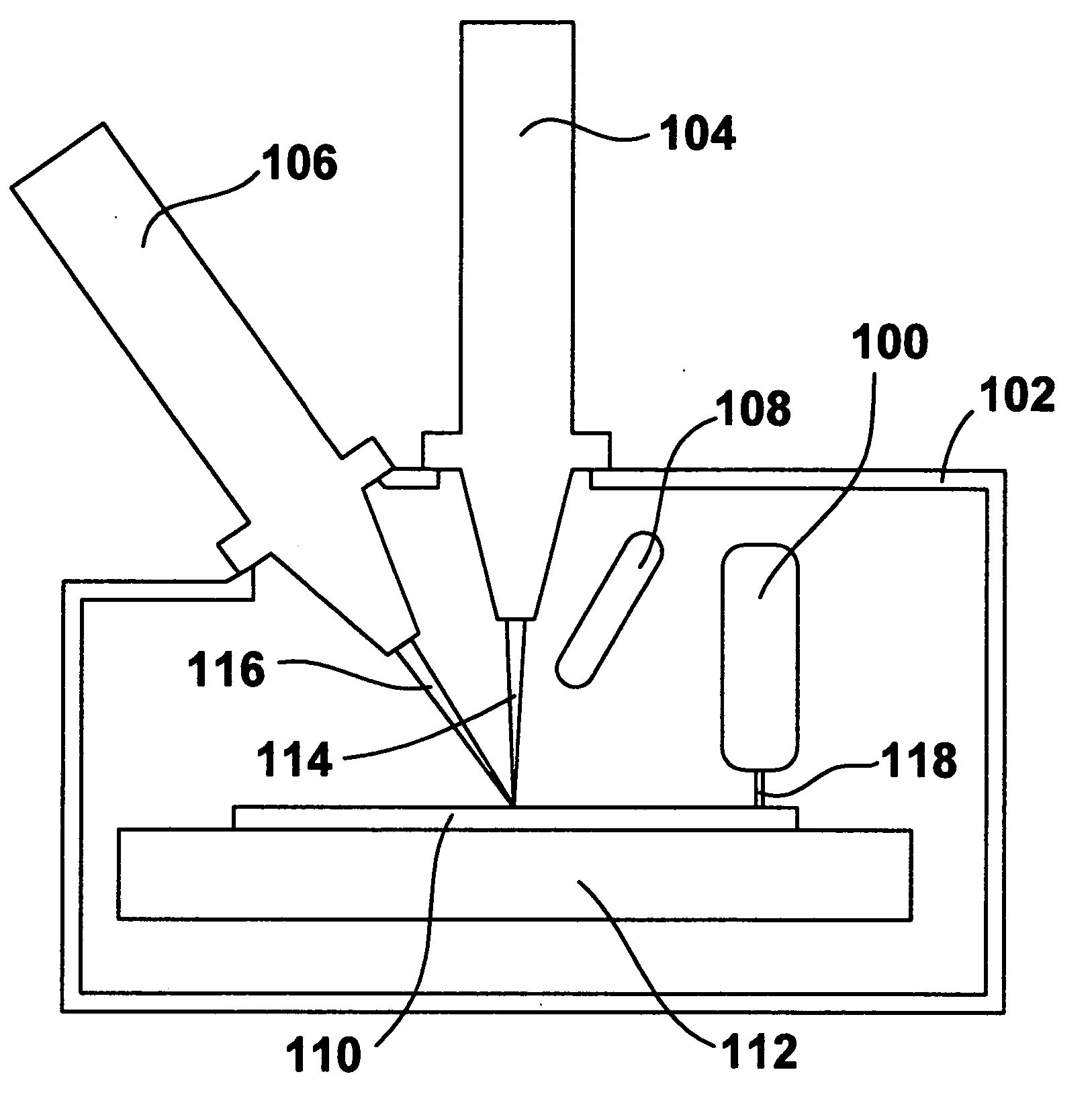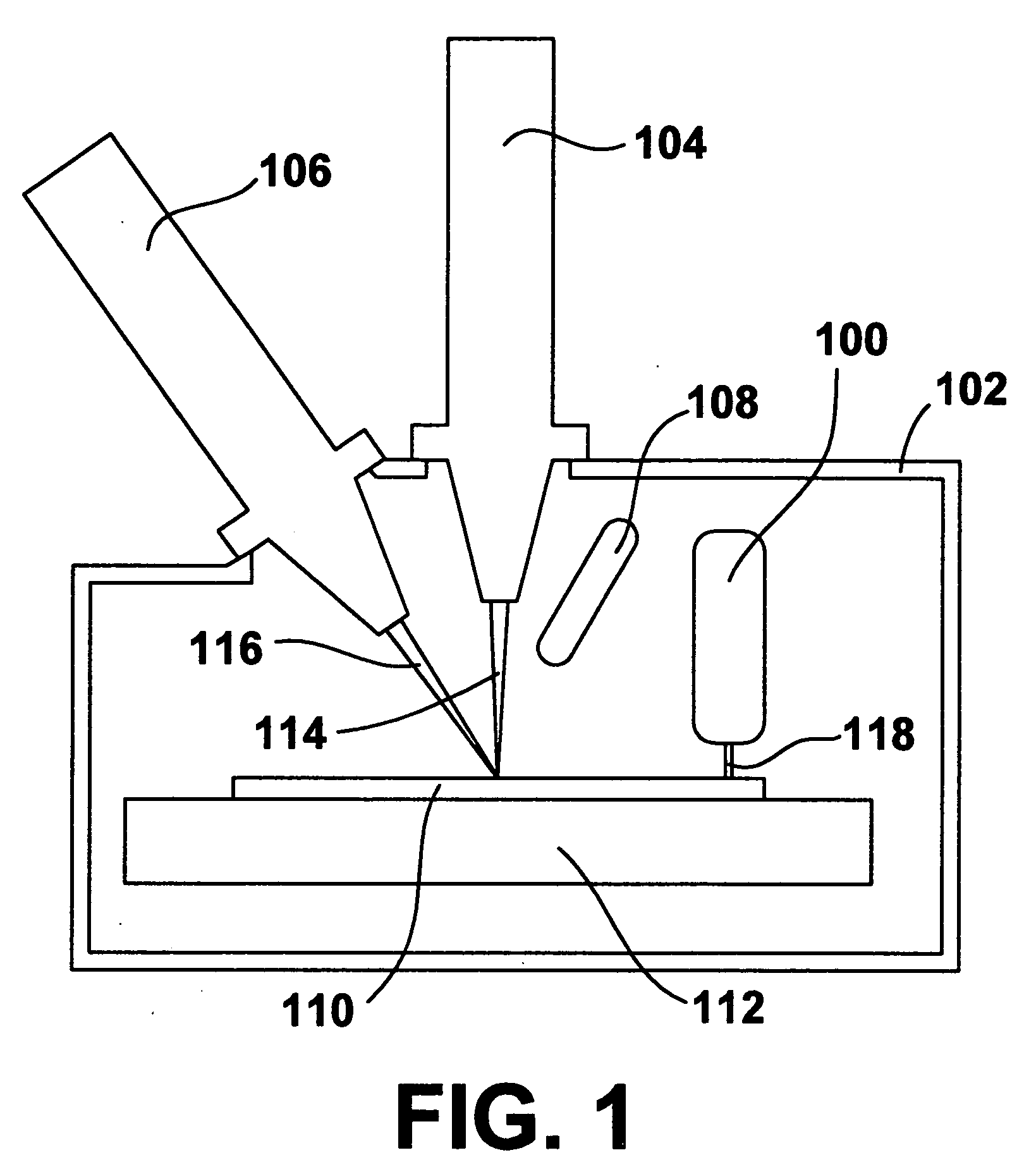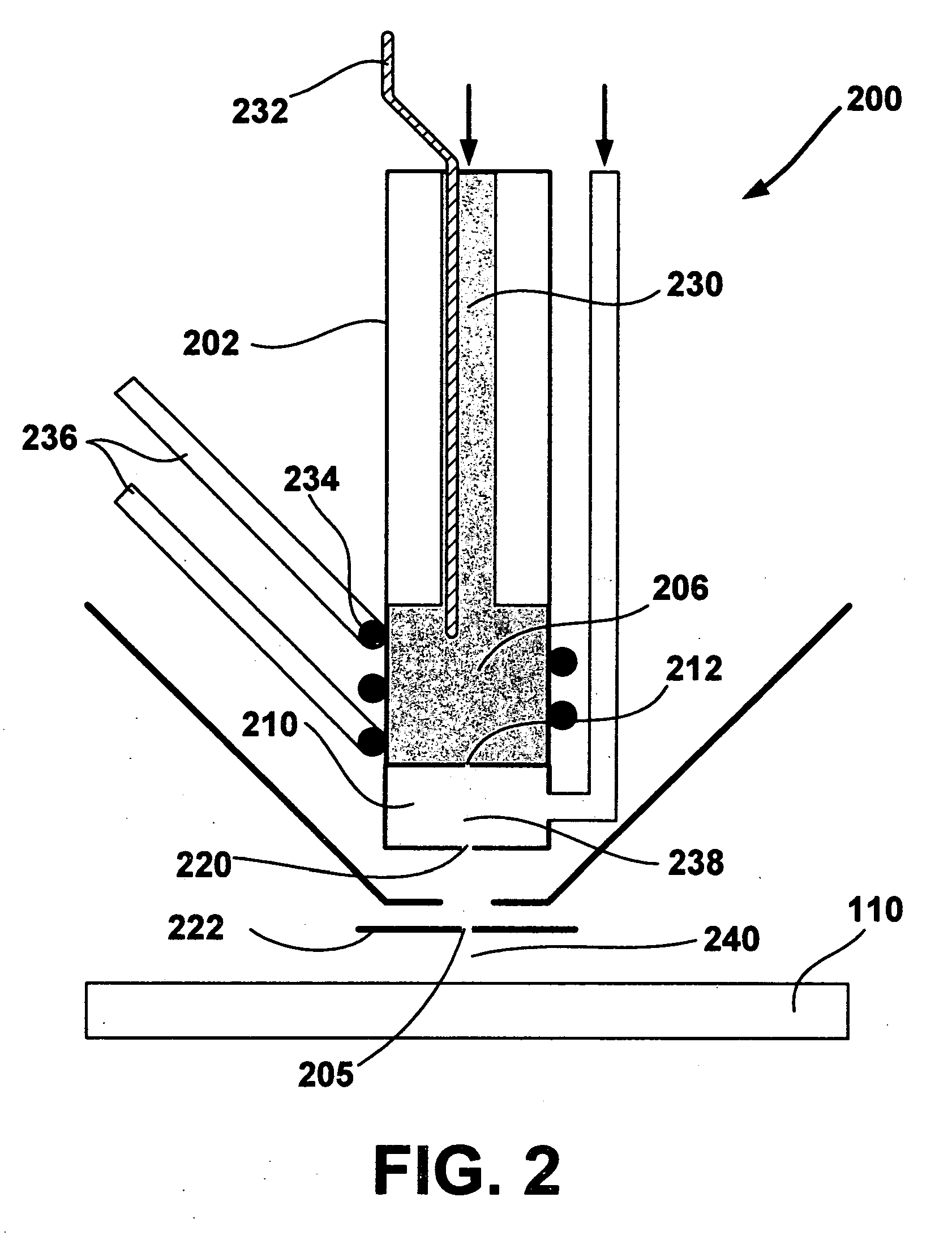Localized plasma processing
a plasma processing and localization technology, applied in the field of plasma processing, can solve the problems of slow processing rate, stop processing surface, gas molecules adhering to the surface area quickly exhausted, etc., and achieve the effect of high processing rate and minimal unintentional damage to the substra
- Summary
- Abstract
- Description
- Claims
- Application Information
AI Technical Summary
Benefits of technology
Problems solved by technology
Method used
Image
Examples
Embodiment Construction
[0018] A preferred embodiment can be used for localized plasma processing for many applications. In some embodiments, the invention can be used for applications that are currently performed using a charged particle system with a gas injection system (GIS). In these embodiments, the invention uses a plasma to activate a reactive gas, rather than using a charged particle beam. A wider variety of gases can be used in the invention than in a conventional GIS system, because in a typical charged particle beam system, the gas must adhere to the surface to be activated by the charged particle beam. The present invention can use almost any gas that is currently used in GIS systems, as well as gases that are currently used in plasma systems for whole wafer processing. Because the jet of reactive gas of the present invention is typically not as focused as a charged particle beam, embodiments of the invention process a larger area.
[0019] Embodiments of the present invention can process areas ...
PUM
| Property | Measurement | Unit |
|---|---|---|
| pressure | aaaaa | aaaaa |
| energy | aaaaa | aaaaa |
| energy | aaaaa | aaaaa |
Abstract
Description
Claims
Application Information
 Login to View More
Login to View More - R&D
- Intellectual Property
- Life Sciences
- Materials
- Tech Scout
- Unparalleled Data Quality
- Higher Quality Content
- 60% Fewer Hallucinations
Browse by: Latest US Patents, China's latest patents, Technical Efficacy Thesaurus, Application Domain, Technology Topic, Popular Technical Reports.
© 2025 PatSnap. All rights reserved.Legal|Privacy policy|Modern Slavery Act Transparency Statement|Sitemap|About US| Contact US: help@patsnap.com



